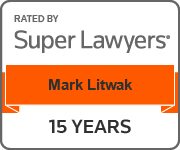In a case that has implications for filmmakers, the Ninth Circuit recently held that the popular band Green Day’s unauthorized use of street artists’ work, as a video backdrop for its stage show did not violate the artists’ rights under copyright or under unfair competition law.
Seltzer is an artist and illustrator who made a drawing of a screaming, contorted face called Scream Icon. He made large posters and smaller prints with adhesive backs, which he sold and gave away. Many posters have been plastered on walls as street art in Los Angeles and elsewhere. Seltzer used Scream Icon to identify himself and his work’s presence by placing it on advertisements for his gallery appearances, and he licensed it for use in a music video.
Roger Staub, a photographer and professional set-lighting and video designer, photographed a brick wall at the corner of Sunset Boulevard and Gardner Avenue in Los Angeles, which was covered in graffiti and posters—including a weathered and torn copy of Scream Icon.
In May of 2009, Green Day released its eighth studio album, “21st Century Breakdown.” Green Day engaged defendant Performance Environment Design (“PED”) to create the lighting, pyrotechnic effects, and video backdrops for the concert. Staub’s video backdrop was played on a screen behind Green Day during performances at approximately 70 concerts, and also during Green Day’s performance of the song at the MTV Video Music Awards on September 13, 2009. When Seltzer became aware that Green Day was using his art, he wrote the band an e-mail alerting them to their unauthorized use, stating that he would like to “work out a resolution to this issue.” No resolution was reached and he filed suit.
What Staub ultimately created is the allegedly-infringing work, which is an approximately four-minute-long video. The video depicts a brick alleyway covered in graffiti. As the song is performed, several days pass at an accelerated pace and graffiti artists come and go, adding new art, posters, and tags to the brick alleyway. The graffiti includes at least three images of Jesus Christ, which are defaced over the course of the video. Throughout the video, the center of the frame is dominated by an unchanging, but modified, Scream Icon. Staub used the photograph he had taken at Sunset and Gardner, cut out the image of Scream Icon and modified it by adding a large red “spray-painted” cross over the middle of the screaming face. He also changed the contrast and color and added black streaks running down the right side of the face. Staub’s image further differs from Scream Icon because Staub’s original photograph was of a weathered, slightly defaced, and torn poster. Scream Icon is nonetheless clearly identifiable in the middle of the screen throughout the video.
The fair use doctrine “permits and requires courts to avoid rigid application of the copyright statute when, on occasion, it would stifle the very creativity which that law is designed to foster.”
Under the fair use doctrine, copyright law allows the right of the public to draw upon copyrighted works to produce separate works of authorship. Such uses include fair comment and criticism, parody, news reporting, teaching, scholarship, and research. Thus, a movie or literary critic does not need permission to include a small quote from a work being reviewed. It is sometimes said of writers, that if you borrow extensively from another’s work, you are a thief; but if you borrow bits from thousands, you are a scholar. Of course, the scholar adds value by synthesizing information from prior works and creating something new.
In determining whether the use of a copyrighted work is a fair use, courts weigh four factors: 1) the purpose and character of the work; 2) the nature of the copyrighted work; 3) the amount and substantiality of the portion borrowed in relation to copyrighted work as a whole; and 4) the potential adverse effect on the market for, and value of, the copyrighted work.
In applying these factors to a specific factual situation, it can often be difficult to predict whether a use will fall within the doctrine. Generally speaking, a greater amount of material may be borrowed from non-fiction works than from fictional works. Clearly, a writer can borrow historical facts from a previous work without infringing upon the first author’s copyright, because of both the fair use doctrine and because historical facts are not copyrightable. Moreover, since factual works, unlike works of fiction, may be capable of being expressed in relatively few ways, only verbatim reproduction or close paraphrasing will be an infringement.
The court held that the video backdrop was a fair use under the Copyright Act. First, the purpose and character of the use was transformative, because the video altered the expressive content or message of the illustration, and the use was not overly commercial. Second, the illustration was a creative work, but its nature included its status as a widely disseminated work of street art. Third, the defendants copied most of the illustration, but it was not meaningfully divisible. Fourth, the video backdrop did not affect the value of the illustration.
Seltzer v. Green Day, Inc., Nos. 11-56573, 11-57160, 2013 U.S. App. LEXIS 16322 (9th Cir. Aug. 7, 2013).
The full decision can be read at: http://cdn.ca9.uscourts.gov/datastore/opinions/2013/08/07/11-56573.pdf

